

What do automation and embedded systems have in common? The short answer is: more and more. The annual Embedded World trade fair, held every winter in Nuremberg, Germany, has become the world’s largest show for the highly fragmented embedded 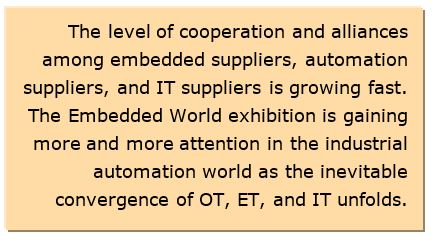
The ongoing success of Embedded World is due to the growing influence of embedded systems, primarily in the automotive sector, but also in the automation industry. Just as the importance of software is rising, embedded systems (the combination of computer hardware and software designed for a specific function within a larger system) is growing rapidly. In addition to everyday applications like automobiles, medical equipment, airplanes, vending machines, cameras, household appliances, toys and mobile devices; embedded systems are employed frequently in industrial machines and process industry devices. And the number of applications is expanding as industrial devices become more connected.
This year’s Embedded World exhibition once again reported record attendance numbers, with over 30,000 visitors and more than 1,000 exhibitors from over 40 countries. Embedded World is a magnet for new trends and applications, especially around IIoT and Industrie 4.0. We saw a broad spectrum of industry topics presented, with an especially strong focus on time-sensitive networks (TSN), virtualization, real-time operating systems (RTOS), security and safety, embedded operating systems, and cloud applications.
Many exhibitors at the show highlighted implementations of the IEEE standards for “time-sensitive networks” (TSN). National Instruments, for example, is cooperating with the Industrial Internet Consortium (IIC), Bosch Rexroth, Cisco, Intel, Kuka, Schneider Electric, and TTTech to develop a testbed for this new IEEE 802.1 real-time Ethernet standard for use in industrial applications. The testbed will evaluate the use of TSN in a live production application.
TSN, an open standard network architecture, provides cross-vendor integration and interoperability. The technology supports open, deterministic real-time communication over a single Ethernet network, such as between motor control applications and industrial robots. TSN provides access to data in real time. This is necessary to optimize business processes and create new business models based on intelligent, interlinked networks, systems and machines. So TSN will play an important role for the realization of the IIoT.
For the developer community, the open source idea has long been a golden rule. Increasingly, this approach is now entering the traditionally conservative automation industry. Companies like Kunbus or Janz Tec are offering small Industrial PCs (IPCs) based on 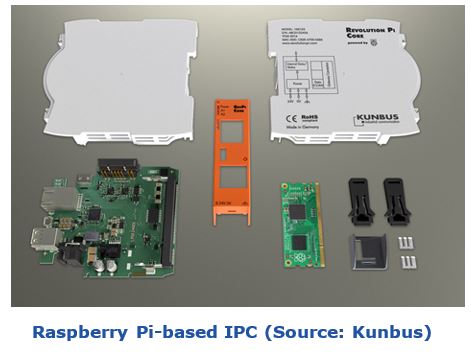
These types of open systems lower the entry barrier for developing software applications. Depending on the knowledge and preferences of the software developer, he/she can use various programming languages, starting with simple graphical programming languages such as Scratch, Perl or Python; ranging up to demanding high-level languages such as C, C ++, Java and many more.
Of course, a system based on the Raspberry Pi still has some limitations. The temperature range for reliable operation is limited to 0 to 45 °C, compared to higher ranges typically offered in IPCs. Besides these environmental specifications, concerns about reliability and long-term availability of parts have limited their acceptance in the industrial automation sector.
Just a few years ago, no major automation suppliers were to be found at Embedded World. But times have changed. From year to year we see more and more automation companies participating, even if their numbers are small compared to the SPS IPC DRIVES exhibition held every year in November at the same location.
GE's Automation & Controls division presented its new Industrial Internet Control System (IICS), as well as a new line of industrial PCs. GE now adapts the concept of modular IPC design, common in the automation world.
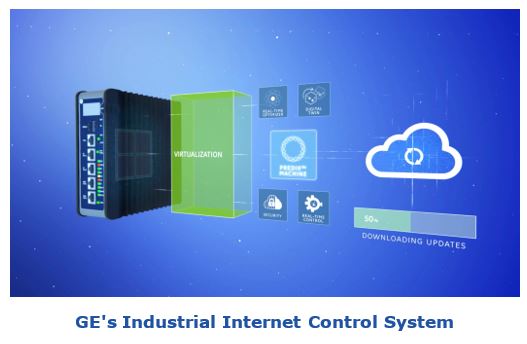
Advantech announced the launch of its “WISE-PaaS Marketplace,” an online store for software services from Advantech and 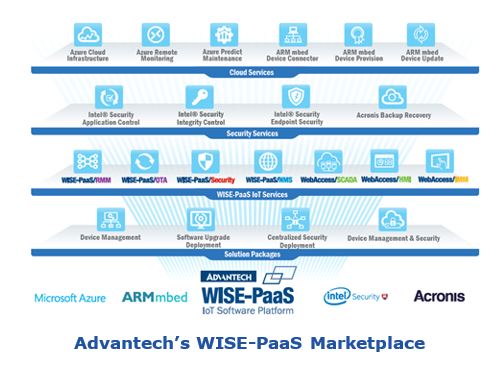
WISE-PaaS offers various IIoT cloud services based on Microsoft Azure and the ARMmbed Cloud. ARMmbed Cloud, a Software-as-a-Service package, includes device management (any device on any network or cloud), provisioning, and secure and reliable software updating. IIoT security services from Intel Security and Acronis as well as preconfigured packages with cloud, security and WISE PaaS services are integrated into Advantech’s Edge Intelligence Server (EIS). The WISE-PaaS Marketplace also includes IIoT software from independent third-party vendors, allowing customers to connect existing systems to the cloud. The goal is to build a shared platform that enables customers to market their own IIoT solutions and services.
Advantech also announced its Embedded Linux & Android Alliance, a unified platform for the industrial embedded and IIoT market. Ten partners, including AIMobile, ArcherMind, Canonical (Ubuntu), Lineo, Retronix, RTSoft, Timesys, Thundersoft and Witeko are on board to enable standardized board customization and a unified architecture for embedded Linux and Android on RISC platforms.
Kontron, which did not exhibit at the SPS IPC DRIVES fair in 2016, had a large booth at the Embedded World exhibition. After S&T acquired Kontron, former Kontron CEO (from 1999 to 2007), Hannes Niederhauser returned to his old job in December 2016, 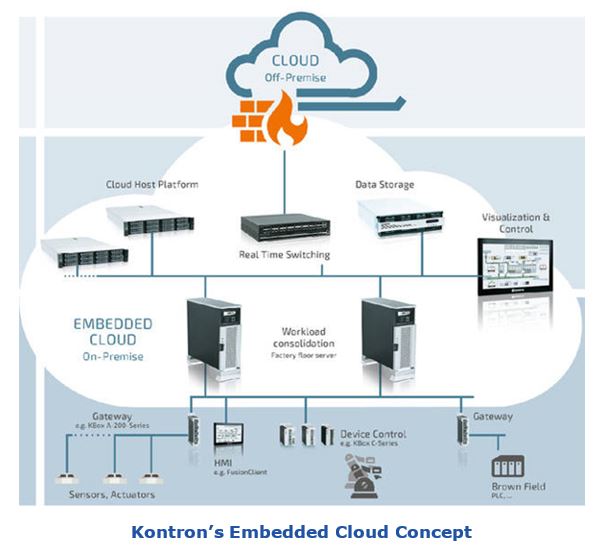
Kontron presented a new and broader IPC portfolio that includes industrial tablets, notebooks, and panel PCs. The company also highlighted its secure system approach that protects embedded systems on three device levels relevant to security: BIOS (Secure BIOS), operating system (Secure OS), and application (Secure Application).
The main topic discussed at the Kontron booth was its highly promoted “embedded cloud.” According to the company, this integrates data from all systems like CAD, product data, ERP and from the shop floor. Computers and other on-premise devices form the embedded cloud.
Kontron is also working on an industrial server solution that combines the computing and storage performance of cloud servers (300+ cores and a storage capacity of 100+ TB) and the robustness of industrial servers (extended temperature range with shock and vibration resistance). At the exhibition, Kontron showed a prototype of this industrial server for the shop floor, which could possibly replace 19-inch mount-rack IPCs to build the backbone of the embedded cloud.
While Siemens exhibited with a small booth focused on PLM, the company’s most relevant presence was through Mentor Graphics, a provider of electronic design automation (EDA) software. At the time of the fair, Siemens had announced its intention to acquire Mentor Graphics, but the deal wasn’t yet fully completed (it is now). According to Siemens, the Mentor Graphics acquisition makes the combined organization the world’s leading supplier of industrial software used for product design, simulation, verification, testing, and manufacturing.
Mentor Graphics showed solutions to:
In Siemens’ view, Mentor’s suite of electronic design automation is critically important to its vision of growing its customer base. Mentor Graphics will be integrated in the PLM business unit, part of the Siemens Digital Factory division.
Due to Siemens’ acquisition of Mentor Graphics, ARC was surprised to see a demonstration of Siemens IIoT gateways at the Wind River booth. The demo showed how Wind River technologies can enable a new industrial era through virtualization, real-time performance, and edge-to-cloud connectivity via Wind River software and “Titanium Cloud.” Titanium Cloud is an on-premise cloud-scale infrastructure intended to enable companies to extend the life of aging legacy control systems not previously designed to support IIoT. Additionally, the company hosted a series of forum sessions covering VxWorks, Wind River Helix Device Cloud, and the newly introduced Titanium Control.
One notable takeaway from this year’s Embedded World was the high level of cooperation and alliances announced among embedded suppliers, automation suppliers, and IT suppliers. Many exhibitors highlighted their respective cooperation with partners, especially in areas like networking, security and the cloud. The embedded industry clearly does not regard this just as a technical task and the partnerships with associations like OPC Foundation will help to make different systems and protocols compatible for end users.
The Industrial Internet of Things is creating new business models. Licensing concepts such as pay-per-use or prepaid will also gain ground in the industry and thus revenue can be generated long after the sale of the device - a vision that will change business models.
Automation end users and suppliers alike should keep an eye on the embedded industry and visit Embedded World or similar exhibitions. Trends from the embedded industry are entering the automation industry at an increasing rate as the operational technology, engineering technology, and information technology worlds converge. This trend will continue for the foreseeable future as the importance of embedded systems for industrial automation continues to grow.
If you would like to buy this report or obtain information about how to become a client, please Contact Us
Keywords: Embedded World, IIoT, Industrie 4.0, Gateways, IPC, RTOS, Open Source, TSN, OPC UA, ARC Advisory Group.

